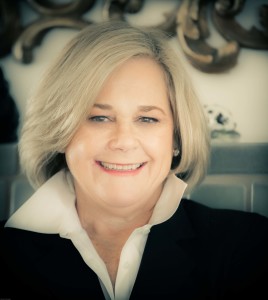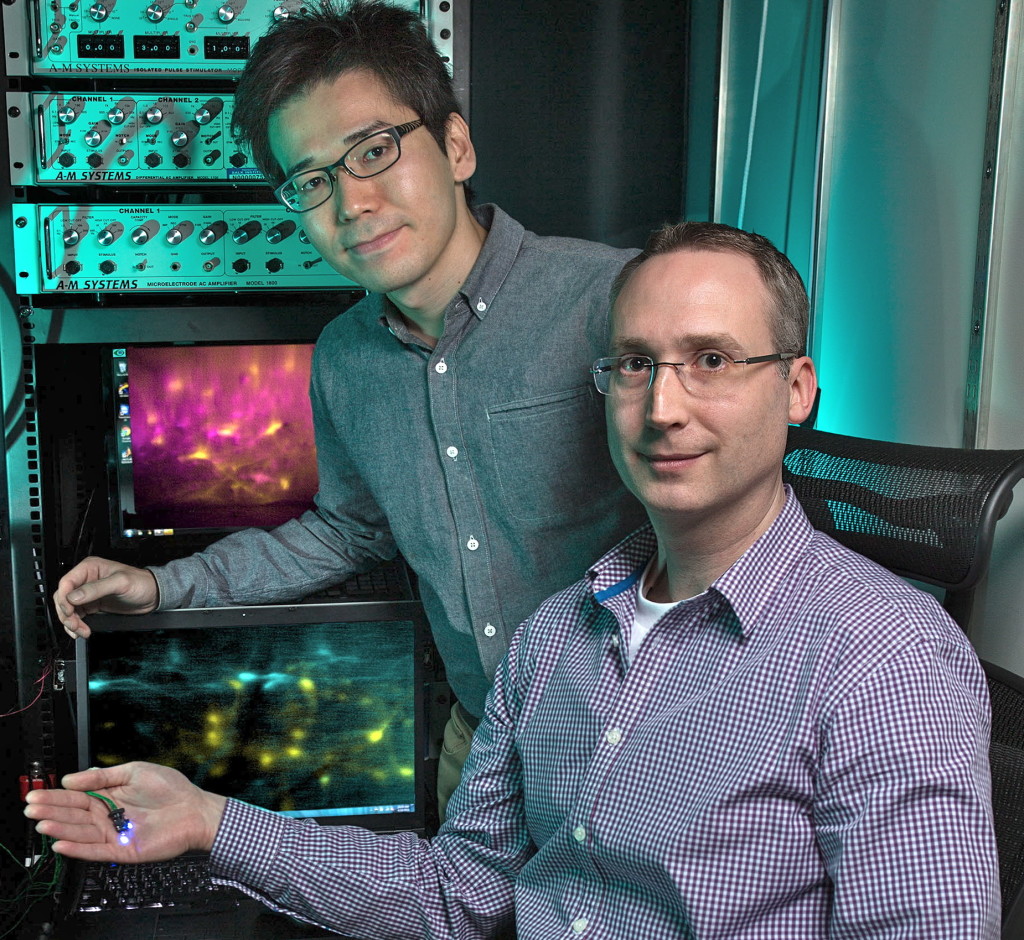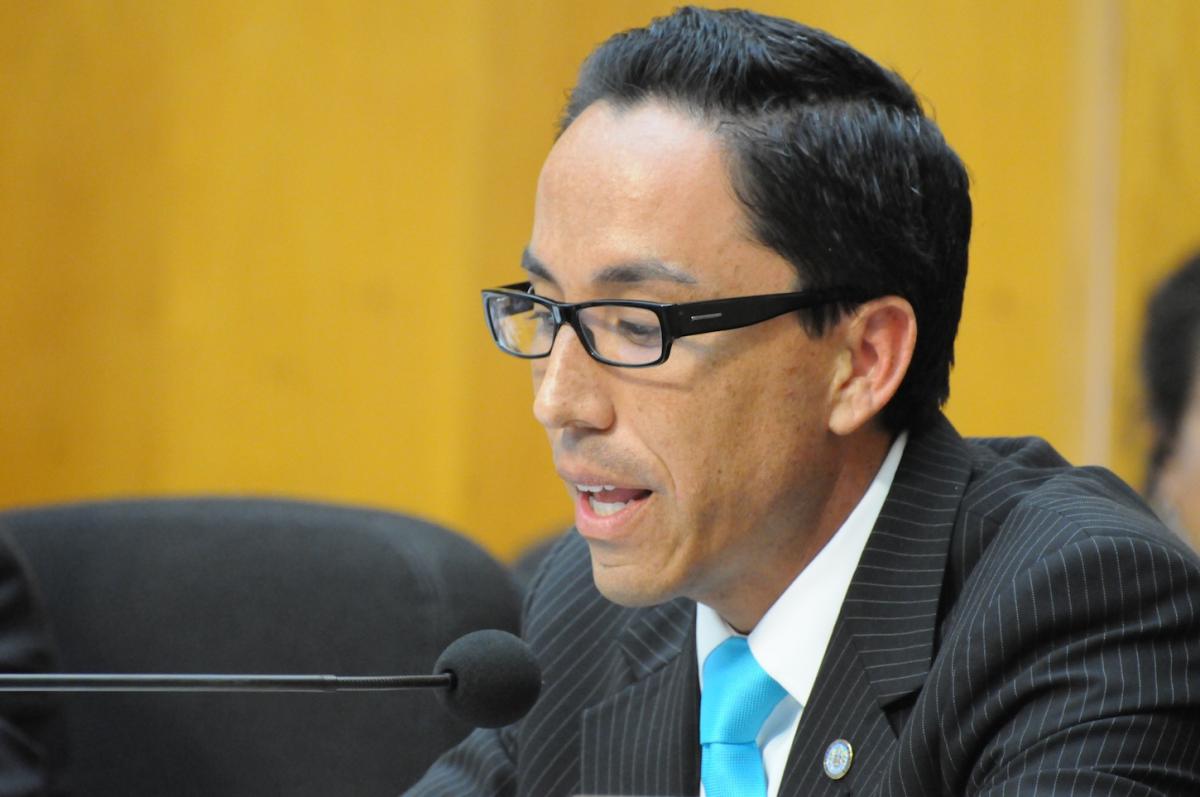Daily Business Report-May 2, 2016
The SkySafe system can take control of a rogue drone over the air and safely land it. (Image by SkySafe)
Venture Capital Firm Invests $3 Million In
Former Grad Students’ Drone Security Company
By Doug Ramsey | UC San Diego News Center
Andreessen Horowitz, one of the top venture capital firms in Silicon Valley, has agreed to lead a $3 million investment in SkySafe, a fledgling company founded by former grad students at the Universtiy of California San Diego.
Grant Jordan and Paul Wicks, former students in the master’s program in computer science and engineering at UC San Diego, co-created SkySafe to protect organizations from illegal or dangerous incursions from commercial drones and their owners.
“I think security is one of the most exciting and diverse areas of computer science,” said Jordan, SkySafe CEO, in the wake of the April 19 funding announcement by Andreessen Horowitz. “It cuts across all other research areas and every project is new. What other area lets you work on such diverse subjects as spam, underground economies, Bitcoin, Internet of Things devices, and drones, all in the course of just a few years?”
In a nutshell, SkySafe has developed technology that will allow institutional users to disable drones flying in areas that are off-limits, or those in accessible areas that may be flying dangerously. The technology leverages radio waves to override the instructions from a drone owner’s remote control unit, thus taking control of the airborne device.
In an article posted on LinkedIn, Jordan noted that there have been no effective tools to control airspace and protect people and places from drone threats. “Our goal is to help drones be a positive change in society, by improving safety, management and coordination,” he said. “We’re building the tools to let facilities properly control and protect their airspace. Our system detects, identifies, tracks and takes action when needed… to secure the area, allowing the safe operation of authorized drones and stopping dangerous ones.”
In an interview with TechCrunch, Jordan also noted that, “Between that security work and (my) drone work, we saw a growing threat in the drone space.” He added that SkySafe is initially targeting organizations such as “airports, prisons, stadiums, other event venues, border protection, critical infrastructure.”
Added Jordan: “The number of places that have seen incidents in the past year has grown tremendously.”
According to the SkySafe CEO, being part of Stefan Savage’s security research group was an important stepping stone to SkySafe. “Stefan Savage made an incredible impact on my interest in cyber security,” he explained. “He’s such an incredibly engaging, insightful, and creative thinker. I was incredibly lucky that he took an interest in me and invited me to work on his team; I couldn’t have found a more awesome research group.”
SkySafe is currently inviting partnerships or test deployments of its drone security system, and the company has plans to launch SkySafe in the second half of 2016, initially to qualified public-safety customers.
While working in the lab of CSE Prof. Stefan Savage, Jordan and Wicks co-founded their first startup — an IT-security consulting firm called Somerset Recon. But with the rapid proliferation of commercial drone technology, it became clear that airspace security offered a huge potential market if Jordan and Wicks could come up with the right solution.
According to the SkySafe CEO, being part of Stefan Savage’s security research group was an important stepping stone to SkySafe. “Stefan Savage made an incredible impact on my interest in cyber security,” he explained. “He’s such an incredibly engaging, insightful, and creative thinker. I was incredibly lucky that he took an interest in me and invited me to work on his team; I couldn’t have found a more awesome research group.”
_____________________________________________
FDA Approves First Drug for Treatment
Of Alzheimer’s Hallucinations, Delusions
The U.S. Food and Drug Administration has approved Acadia Pharmaceutical’s Nuplazid drug for the treatment of hallucinations and delusions associated with Parkinson’s disease psychosis. In 2014 the FDA designated Nuplazid as a “breakthrough therapy” for this condition.
Acadia, based in San Diego, plans to make Nuplazid commercially available to patients suffering from hallucinations and delusions associated with Parkinson’s disease psychosis in the United States in June 2016.
According to the National Parkinson Foundation, about 1 million people in the United States and from four to six million people worldwide suffer from Parkinson’s disease. An estimated 40 percent of these patients have Parkinson’s disease psychosis, which is characterized by hallucinations and delusions, is associated with significant caregiver burden, and is a major reason for nursing home placement among Parkinson’s patients.
Water Authority Plan Sees Reliable
Water Supply for Decades to Come
San Diego County will continue to have a safe and reliable water supply for decades because of the development of drought-resilient water resources and emphasis on water-use efficiency, according to the San Diego County Water Authority’s draft Urban Water Management Plan.
The draft plan was released for public review, starting a public comment period that will include a public hearing on May 26 during the regular meeting of the Water Authority Board of Directors. The board will consider adoption of the plan during its regular meeting on June 23.
The Water Authority estimates that future water demands will be about 14 percent lower in 2020 and 15 percent lower in 2035 compared to projections in the 2010 plan. The reduction is due to changes in demographic and economic projections by SANDAG that were primarily driven by the Great Recession and long-term improvements in water-use efficiency by residents and businesses.
To meet projected demands, the Water Authority anticipates continued development of highly reliable, locally controlled water supplies such as new recycling and groundwater recovery projects. “We enjoy a safe and reliable water supply even during the current drought because earlier generations crafted long-term plans and carried them out,” said Bob Yamada, director of water resources for the Water Authority. “As we look into the future, we remain very confident about the ability of the Water Authority and its 24 member agencies to support our vibrant region through a combination of locally controlled, drought-proof supplies and making the most of every drop.”
Realtor Association Economist
To Report on California Housing Market

Leslie Appleton-Young, vice president and chief economist for the California Association of Realtors, will report on the state’s housing market at the May 6 meeting of the Pacific Southwest Association of Realtors.
Appleton-Young’s talk will include the latest research in housing and urban economics, foreclosures and demographic trends. At CAR, she directs the activities of the association’s Member Information Group. She oversees the analysis of housing market and brokerage industry trends, broker relations, and membership development activities.
The meeting will be from 11:30 a.m. to 2 p.m. at PSAR’s South County Service Center, 880 Canarios Court in Chula Vista. Cost to attend is $15 for association members and $20 for nonmembers. For more information, call PSAR at (619) 421-7811 or visit www.psar.org.

Tiny Microscopes Reveal Hidden
Role of Nervous System Cells
A microscope about the size of a penny is giving scientists a new window into the everyday activity of cells within the spinal cord. The innovative technology revealed that astrocytes — cells in the nervous system that do not conduct electrical signals and were traditionally viewed as merely supportive — unexpectedly react to intense sensation.
The new miniaturized microscope and related imaging methods, described by Salk Institute scientists on April 28 in Nature Communications,
offer unprecedented insight into nervous system function and could lead to novel pain treatments for spinal cord injuries, chronic itch and neurodegenerative diseases such as amyotrophic lateral sclerosis (ALS).
The spinal cord is crucial for sensing and responding to the world. Sometimes it even works independently from the brain, such as when your hand recoils from a hot stove before the sensation has fully registered. But it is unknown exactly how the cells within the spinal cord encode these and other feelings from the skin or internal organs.
In the new study, senior author Axel Nimmerjahn, an assistant professor in Salk’s Waitt Advanced Biophotonics Center, and his team improved upon the miniaturized microscopes they first described back in 2008. The researchers’ new version—which features numerous hardware and software improvements—enabled them to visualize changes in cellular activity in awake, roaming mice.
“For a long time, researchers have dreamed of being able to record cellular activity patterns in the spinal cord of an awake animal. On top of that, we can now do this in a freely behaving animal, which is very exciting,” says first author Kohei Sekiguchi, a Salk researcher and PhD student at the University of California at San Diego.
La Mesa Biotech Firm Licenses Tijuana
Center to Test Bone Marrow Drug
Regen BioPharma Inc. of La Mesa has approved a license agreement with Pan Am Cancer Treatment Center in Tijuana to test HemaXellerate — a cellular drug designed to heal damaged bone marrow — in a first-in-human proof of concept study. Typically, bone marrow is damaged by chemotherapy, radiation therapy, or diseases such as anemia.
Up to 10 patients with chemotherapy-induced aplastic anemia will be treated with HemaXellerate, and outcomes will be measured at one, three and six months. The study was initiated by Dr. Julio Selva Pallares, professor of clinical hematology at the Autonomous University of Baja California and director of its hematology transfusion unit.
“We were delighted that Dr. Pallares initiated this trial and that Regen could support him. We hope that HemaXellerate will benefit these patients,” said Dr. David Koos, CEO of Regen BioPharma. “As an investigator-initiated trial, the license does not have a financial component. The first-in-human study, however, is very valuable to our research.”
HemaXellerate is comprised of cells extracted from the patient’s own fat tissue and processed using a proprietary method to induce a biological response in the patient that heals damaged bone marrow and restores the body’s ability to generate healthy blood cells.
The FDA recently cleared Regen to perform phase I clinical trials in the U.S. using HemaXellerate for patients battling aplastic anemia.
The license to Pan Am Cancer Treatment Center grants only the right to test HemaXellerate in a human proof of concept study. It does not permit Pan Am to market the therapy or provide the therapy to any party other than in connection with the study.
________________________________________________

SOHO Announces 34th Annual
People In Preservation Winners

Save Our Heritage Organisation is celebrating National Historic Preservation Month with its 34th annual People In Preservation Awards, which salute San Diego County residents who have excelled in outstanding preservation projects.
Thirteen awards will be bestowed on May 19 in the historic Marston House formal gardens on Seventh Avenue in Balboa Park. A catered champagne reception will be held from 5:30 to 6:30, followed by the awards ceremony.
Lifetime Achievement
The Lifetime Achievement Award is being shared by Charles Kaminski and Jeffrey Shorn, a married couple who have been leaders and activists in San Diego historic preservation since 1975. They moved into a beach cottage in the world renowned compound known as El Pueblo Ribera, designed in the 1920s by Rudolph Schindler, and proceeded to document the place and help save it. Both are architects with knowledge and passion for preserving significant buildings and communicating the importance of historic resources. In 2004, they were featured in the groundbreaking book, “A Passion to Preserve: Gay Men as Keepers of Culture.”
When Kaminski and Shorn are not united in protecting the same structure, such as the Salk Institute for Biological Studies, they complement each other. Shorn has focused on preserving some of our most important buildings by successfully nominating them for local and national landmark status. He served on the city of San Diego’s Historical Resources Board for eight years and educated architecture students in San Diego’s first courses in historic preservation. Meanwhile, Kaminski has been at the forefront of preserving the historic character of and public access to the downtown waterfront and safeguarding LGBTQ historic sites, cultural artifacts and records.
“Jeffrey and Charles have honored the city through their long-standing efforts and perseverance toward preserving some of San Diego’s most treasured resources,” the jury said.
Madison Kirkman and Sandor Shapery
Two awards applaud projects that are bringing back innovative modes of transportation. Winner of the “On the Right Track” award is Madison Kirkman, a 17-year-old high school junior from Ramona. His project is a daunting one, even for experienced adults, but he is a third-generation preservationist. Kirkman raised $15,000 through crowdfunding to have the 55-foot remains of a rare motor car moved by barge and flatbed truck from Anchorage, Alaska to his back yard. It is one of three remaining1908 McKeen Motor Cars, an advancedaerodynamic passenger car that originally glided along on the San Diego, Cuyamaca & Eastern Railway. His award is for moving the motor car; his ultimate goal is to restore it and see it ride the rails again.
The quaint, wicker Osborn Electriquettes that ferried 1915 Panama-California Exposition visitors through Balboa Park is remembered in historic photographs, but none of the motorized carts survived. Sandor Shapery wanted to reproduce the Electriquette in time for the exposition’s centennial. After Heritage Architecture & Planning created scale drawings, Shapery had the wicker body of a prototype woven in China. Next he turned to a friend and MIT graduate in Massachusetts, who recreated the battery-powered motor and steering bar. The replica made its debut in 2014, with Shapery its first driver in the park. Since then, Shapery, who is a SOHO board member, had 25 more Electriquettes made for cruising Balboa Park just in time for spring. “Taking a ride is likely to become once again an endearing pastime for park patrons,” the jury said.
Tripp Bennett
Architect Tripp Bennett is being honored for the restoration and adaptive reuse of La Jolla’s 1937 Fire Station Engine Company 13 for the Shepherd YMCA Fire House. One of the few remaining historic buildings in the heart of La Jolla, this fire station with a distinctive parabolic archway is back to its original paint color and its steel windows and wood storefront doors have been restored. Interior features that Y members are enjoying include exposed wood trusses, an old jail cell and new access for the disabled.
Anna Wilcoxson, Kevin Kravits, Gen Leger and Chris Woods
The devoted and meticulous owners of five homes built between 1916 and 1961 in several San Diego neighborhoods have been selected for awards by the People in Preservation three-person jury. Anna Wilcoxson restored her 1916 Prairie style home – removing the brick façade and returning it to the original stucco – in the Mission Hills Historic District, and Kevin Kravets restored the exterior of a “remuddled” home designed by master builder Martin V. Melhorn in Inspiration Heights. Gen Léger and Chris Woods restored a 1961 Midcentury Modern home that is the rare product of the brief partnership of Lloyd Ruocco and Homer Delawie, both titans of San Diego architecture. In the process, the owners say they became avid preservationists.
Kyle and Tim Malone
In Kensington, Kyle and Tim Malone restored their 1925 Mission Revival bungalow by “unwrapping” the stucco finish, which they repaired and refinished. Nearby, Devin and DeLayne Harmon paid attention to every detail as they restored a grand Spanish Revival-style home inside and out. Like Léger and Woods, the Harmons became ardent preservationists during their extensive restoration project.
Richard Bundy and David Chau
Also lauded are the people behind two restored places for socializing. The striking Streamline Moderne Silverado Ballroom in City Heights, owned by David Chau and restored by Bundy & Thompson Architects, is once again a gleaming landmark. This project is especially important because the building is a rare remaining example of Art Deco architecture in San Diego. The historic, second-floor ballroom was popular during the big band era. Plans call for a Chinese restaurant and other businesses at street level, at the corner of University and Euclid Avenues. The building’s restoration and reuse will be a boon to the community,” the jury said.
Richard Suda
At Camp Pendelton, the San Onofre Beach Club has come back to life for use by Marines and their families. It was designed in the Spanish Revival style in 1946 by Myron Hunt, also the architect of the Rose Bowl and the Huntington Library. Heritage Architecture & Planning managed to meet both the Secretary of the Interior’s restoration standards and the Department of Defense’s Anti-Terrorism and Force Protection building requirements. The jury praised the architects for “innovative solutions.”
Christine Jones
SOHO was part of the group responsible for saving the Aztec Brewing Company’s murals and furnishings before the historic Barrio Logan building was demolished in 1990. With special pleasure we present an award to the city of San Diego Commission for Arts and Culture for conservation and restoration of the murals, paintings and painted artifacts. They are now back in the community, on display at the Logan Heights Library. The commission is also being honored for restoring historic artworks in Balboa Park, such as Donal Hord’s “La Tehuana” sculpture in the House of Hospitality’s courtyard and Anna Hyatt Huntington’s equestrian bronze, “El Cid.” The jury commended the commission for prioritizing the preservation of artworks “at a time when funds for Balboa Park are hard to come by.”
Kevin Krumdieck and Paul Thometz
Architect Kevin Krumdeick and Cisterra Development’s project executive Paul Thometz are winners for preserving elements of two buildings in Downtown San Diego’s Warehouse District. The cast-in-place concrete, two-story Western Drug Company Building (1927) is now part of Sempra Energy’s high-rise headquarters. Its two historic facades that turn the corner at Seventh Avenue and J Street were saved, as required by SOHO’s 1999 settlement agreement for a nine-block area anchored by J Street. The exterior of the five-story Bledsoe Company Furniture Building (1925) at Seventh and Island Avenue was restored for the Sempra project. Both buildings, said the jury, “help to enhance the sense of place in the Warehouse District.”
Jury Members
This year’s People In Preservation jury members are longtime preservationists with a wide range of expertise. Allen Hazard is SOHO’s tours committee chair and a prominent Mission Hills preservationist and historian. He co-authored “Images of America: Mission Hills” (Arcadia Publishing, 2015) with Janet O’Dea. Diane Kane, a vice president of the California Preservation Foundation, has worked on preservation projects for the city of San Diego and Caltrans in Los Angeles. She has taught architecture history and planning at San Diego State University, UCLA, the NewSchool of Architecture and other colleges, and is a volunteer at the La Jolla Historical Society. David Swarens is a past SOHO board member who served as president for two terms twice. He sits on citizen planning boards for Golden Hill and Old Town neighborhoods, and on SOHO’s Preservation Action Committee, where he is part of the team that evaluates projects and proposals with community stakeholders.



